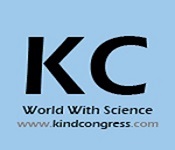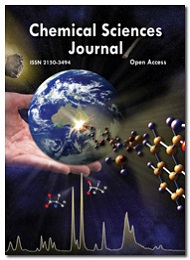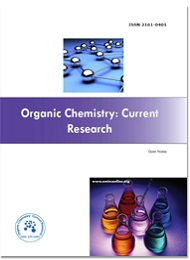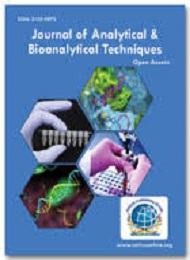Theme: Novel Approaches and Innovations in Chemistry Research
Euro Chemistry 2023
I am delighted to extend a warm welcome to all attendees and guests to the "13th International Chemistry Congress" on behalf of Conference Series. The main theme of Euro Chemistry 2023 is "Novel Approaches and Innovations in Chemistry Research".
Like all previous conferences, Euro Chemistry 2023 promotes interactions between chemical scientists and technical initiatives that improve living standards around the globe. Our excellent technical programme is a true example of international scientific cooperation between at least three distinct nations. Such partnerships can only lead to advancements in technological advancement and an increase in the standard of living for all.
Euro Chemistry 2023 conference is two days of oral and poster sessions, keynotes, social events, and workshops in the beautiful city of Dubai, UAE from November 20-21, 2023.
All the members and staff of the Euro Chemistry 2023 Conference Organizing Committee will spend many hours preparing for this Edition to make it the best possible.
Target Audience:
- Chemical Researchers
- Directors, CEO’s of Organizations
- Scholars from Pharmaceutical backgrounds
- Drug Delivery Technology Manufacturers
- Business Development Managers
- Distributors and Suppliers of Drug Delivery Technologies
- Students, Professors, Researchers, and Faculty of Pharmaceutical Sciences from Universities and Medical Colleges
- Researchers from Pharmaceutical Companies, Pharmacy Associations and Societies
- Health professionals Pharmacists
- Business development professionals, Consultants and Pharma service providers
- Quality control specialist
- Graduates and post graduates in industrial pharmacy
- Medical Devices Manufacturing Companies, CRO
- Data Management Companies.
- Pharmaceutical legislators and regulators
We are excited about the outcome and hope that you will find this Upcoming Edition fruitful enjoyable and worthwhile.
We look forward to seeing you in Dubai, UAE!!!
Regards,
Euro Chemistry 2023 | Organizing Committee Members
Euro Chemistry 2023 is a global standard conference which plays a great platform to discuss and learn about latest advancements and novel approaches in Organic Chemistry, Inorganic Chemistry, Analytical Chemistry, Materials Chemistry, and Green Chemistry: Green chemical principles, Physical Chemistry, Bio Chemistry, Theoretical Chemistry and Medicinal Chemistry. It aims to bring together leading academic scientists, researchers and research scholars to exchange and share their experiences and research results on all aspects of chemistry and related fields.
It also provides a premier interdisciplinary platform for researchers, practitioners and educators to present and discuss the most recent innovations, trends, and concerns as well as practical challenges encountered and solutions adopted in the fields of Chemistry. To discuss the issues and accomplishments in the field of Chemistry Conference Series Conferences has taken the initiation to gather the world class experts both from academic and industry in a common platform at its Chemistry conferences.
Meet Leading Chemistry Scientists, Analytical Chemists, Chemistry experts, Chemical Engineers, Green Chemistry experts, and Environmental chemistry experts at Euro Chemistry 2023 Conference held November 20-21, 2023 | Dubai, UAE
Euro Chemistry 2023 is an international event, attracting global participant’s intent on sharing, exchanging and exploring new avenues of Euro Chemistry, PhotoChemistry and latest Developments. The aim of this event is to promote quality research and real-world impact in an atmosphere of true international association between scientists and engineers by bringing together again the world class researchers, International Communities and Industrial Heads to deliberate the latest developments and innovations in the fields of Euro Chemistry.
Track 01: Advanced Organic & Inorganic Chemistry
Organic chemistry is a chemistry sub discipline involving the scientific study of the structure, properties, and reactions of organic compounds and organic materials, i.e., matter in its various forms that contain carbon atoms. Study of structure includes many physical and chemical methods to determine the chemical composition and the chemical constitution of organic compounds and materials.
Related Associations: The Academy of Sciences for the Developing World (TWAS), Bio Chemical Society, British Crystallographic Association, Canadian Society for Chemistry, Chemical Society of Japan, Danish Chemical Society, Federation of African Societies of Chemistry (FASC), Israel Analytical Chemistry Society, New Zealand Institute of Chemistry.
Track 02: Analytical Chemistry
Analytical techniques spans nearly all areas of chemistry but involves the development of tools and methods to measure physical properties of substances and apply those techniques to the identification of their presence (qualitative analysis) and quantify the amount present (quantitative analysis) of species in a wide variety of settings, analytical chromatography will be used in various fields for separation and analytical biochemistry is used to detect various samples.
Associated Societies: American Chemical Society, American Institute of Chemists (AIC), Association of Greek Chemists, Bio Chemical Society, Chemical Institute of Canada (CIC), Chinese Chemical Society (CCS), Danish Chemical Society, Federation of European Biochemical Societies, Japan Association for International Chemical Information, Royal Society of Chemistry (RSC), World Association of Theoretical and Computational Chemists
Track 03: Green and Sustainable Chemistry
Green chemistry, also called sustainable chemistry, is an area of chemistry and chemical engineering focused on the designing of products and processes that minimize the use and generation of hazardous substances. Environmental chemistry focuses on the effects of polluting chemicals on nature whereas green chemistry focuses on the environmental impact of chemistry, including technological approaches to preventing pollution and reducing consumption of non-renewable resources.
Related Associations: The Academy of Sciences for the Developing World (TWAS), Bio Chemical Society, British Crystallographic Association, Canadian Society for Chemistry, Chemical Society of Japan, Danish Chemical Society, Federation of African Societies of Chemistry (FASC), Israel Analytical Chemistry Society, New Zealand Institute of Chemistry.
Track 04: Physical Chemistry
Physical Chemistry is the study of macroscopic, atomic, subatomic, and particulate phenomena in chemical systems in terms of the principles, practices, and concepts of physics such as motion, energy, force, time, thermodynamics, quantum chemistry, statistical mechanics, analytical dynamics and chemical equilibrium. , in contrast to chemical physics, is predominantly (but not always) a macroscopic or supra-molecular science, as most of the principles on which it was founded relate to the bulk rather than the molecular/atomic structure alone (for example, chemical equilibrium and colloids).
Associated Societies: American Chemical Society, American Institute of Chemists (AIC), Association of Greek Chemists, Bio Chemical Society, Chemical Institute of Canada (CIC), Chinese Chemical Society (CCS), Danish Chemical Society, Federation of European Biochemical Societies, Japan Association for International Chemical Information, Royal Society of Chemistry (RSC), World Association of Theoretical and Computational Chemists
Track 05: Theoretical Chemistry
Theoretical chemistry is the examination of the structural and dynamic properties of molecules and molecular materials using the tools of quantum chemistry, equilibrium and non-equilibrium statistical mechanics and dynamics. Theoretical chemistry seeks to provide theories and explanations for chemical observations whilst also posing questions to be answered by future experiments. Playing a key role in physical chemistry, it uses the laws of physics to predict molecular structure, dynamics, bonding, reactivity, physical properties and spectroscopic response.
Related Associations: The Academy of Sciences for the Developing World (TWAS), Bio Chemical Society, British Crystallographic Association, Canadian Society for Chemistry, Chemical Society of Japan, Danish Chemical Society, Israel Analytical Chemistry Society, New Zealand Institute of Chemistry.
Track 06: Polymer Chemistry
Polymer chemistry is a sub-discipline of chemistry that focuses on the chemical synthesis, structure, chemical and physical properties of polymers and macromolecules. The principles and methods used for polymer chemistry are common to chemistry sub-disciplines organic chemistry, analytical chemistry, and physical chemistry. Many materials have polymeric structures, from fully inorganic metals and ceramics to DNA and other biological molecules; however, polymer chemistry is typically referred to in the context of synthetic, organic compositions.
Associated Societies: American Chemical Society, American Institute of Chemists (AIC), Association of Greek Chemists, Bio Chemical Society, Chemical Institute of Canada (CIC), Chinese Chemical Society (CCS), Danish Chemical Society, Federation of European Biochemical Societies, Japan Association for International Chemical Information, Royal Society of Chemistry (RSC), World Association of Theoretical and Computational Chemists
Track 07: Pharmaceutical chemistry
Pharmaceutical chemistry is the study of drugs, and it involves drug development. This includes drug discovery, delivery, absorption, metabolism, and more. There are elements of biomedical analysis, pharmacology, pharmacokinetics, and pharmacodynamics. Pharmaceutical chemistry work is usually done in a lab setting. Pharmaceutical chemistry involves cures and remedies for disease, analytical techniques, pharmacology, metabolism, quality assurance, and drug chemistry.
Related Associations: The Academy of Sciences for the Developing World (TWAS), Bio Chemical Society, British Crystallographic Association, Canadian Society for Chemistry, Chemical Society of Japan, Danish Chemical Society, Federation of African Societies of Chemistry (FASC), Israel Analytical Chemistry Society, New Zealand Institute of Chemistry.
Track 08: Materials Chemistry
Materials chemistry involves the use of chemistry for the design and synthesis of materials with interesting or potentially useful physical characteristics, such as magnetic, optical, structural or catalytic properties. The interdisciplinary field of materials science, also commonly termed materials science and engineering involves the discovery and design of new materials, with an emphasis on solids.
Associated Societies: American Chemical Society, American Institute of Chemists (AIC), Association of Greek Chemists, Bio Chemical Society, Chemical Institute of Canada (CIC), Chinese Chemical Society (CCS), Danish Chemical Society, Federation of European Biochemical Societies, Japan Association for International Chemical Information, Royal Society of Chemistry (RSC), World Association of Theoretical and Computational Chemists
Track 09: Biochemistry
Biochemistry can be defined as the science concerned with the chemical basis of life. The cell is the structural unit of living organisms. Thus, biochemistry can also be described as the science concerned with the chemical constituents of living cells and with the reactions and processes, they undergo. By this definition, biochemistry encompasses large areas of cell biology, of molecular biology, and of molecular genetics.
Related Associations: The Academy of Sciences for the Developing World (TWAS), Bio Chemical Society, British Crystallographic Association, Canadian Society for Chemistry, Chemical Society of Japan, Danish Chemical Society, Federation of African Societies of Chemistry (FASC), Israel Analytical Chemistry Society, New Zealand Institute of Chemistry.
Track 10: Chemical Engineering
Chemical engineering is a branch of engineering that applies physical sciences (physics and chemistry), life sciences (microbiology and biochemistry), together with applied mathematics and economics to produce, transform, transport, and properly use chemicals, materials and energy. A chemical engineer designs large-scale processes that convert chemicals, raw materials, living cells, microorganisms and energy into useful forms and products. It is a process engineering which mainly comprises of the concepts of unit operation, unit process and chemical technology.
Associated Societies: American Chemical Society, American Institute of Chemists (AIC), Association of Greek Chemists, Bio Chemical Society, Chemical Institute of Canada (CIC), Chinese Chemical Society (CCS), Danish Chemical Society, Federation of European Biochemical Societies, Japan Association for International Chemical Information, Royal Society of Chemistry (RSC), World Association of Theoretical and Computational Chemists
Track 11: Chemistry in Clinical Research
Clinical chemistry (also known as chemical pathology, clinical biochemistry or medical biochemistry) is the area of chemistry that is generally concerned with analysis of bodily fluids for diagnostic and therapeutic purposes. In the many decades since, other techniques have been applied as science and technology has advanced, including the use and measurement of enzyme activities, spectrophotometry, electrophoresis, and immunoassay.
Related Associations: The Academy of Sciences for the Developing World (TWAS), Bio Chemical Society, British Crystallographic Association, Canadian Society for Chemistry, Chemical Society of Japan, Danish Chemical Society, Federation of African Societies of Chemistry (FASC), Israel Analytical Chemistry Society, New Zealand Institute of Chemistry.
Track 12: Computational Chemistry
Combinatorial chemistry comprises chemical synthetic methods that make it possible to prepare a large number (tens to thousands or even millions) of compounds in a single process. These compound libraries can be made as mixtures, sets of individual compounds or chemical structures generated by computer software. Synthesis of molecules in a combinatorial fashion can quickly lead to large numbers of molecules.
Associated Societies: American Chemical Society, American Institute of Chemists (AIC), Association of Greek Chemists, Bio Chemical Society, Chemical Institute of Canada (CIC), Chinese Chemical Society (CCS), Danish Chemical Society, Federation of European Biochemical Societies, Japan Association for International Chemical Information, Royal Society of Chemistry (RSC), World Association of Theoretical and Computational Chemists
Track 13: Electrochemistry
Electrochemistry is the branch of physical chemistry that studies the relationship between electricity, as a measurable and quantitative phenomenon, and identifiable chemical change, with either electricity considered an outcome of a chemical change or vice versa. These reactions involve electric charges moving between electrodes and an electrolyte (or ionic species in a solution). Thus, electrochemistry deals with the interaction between electrical energy and chemical change.
Related Associations: The Academy of Sciences for the Developing World (TWAS), Bio Chemical Society, British Crystallographic Association, Canadian Society for Chemistry, Chemical Society of Japan, Danish Chemical Society, Federation of African Societies of Chemistry (FASC), Israel Analytical Chemistry Society, New Zealand Institute of Chemistry.
Track 14:Natural Product Chemistry
Chemistry of natural product is a field of organic chemistry. A natural product is a chemical compound or substance produced by a living organism that is found in nature. The term natural product has been extended for commercial purposes to refer to cosmetics, dietary supplements and foods produced from natural sources without added artificial ingredients.
Associated Societies: American Chemical Society, American Institute of Chemists (AIC), Association of Greek Chemists, Bio Chemical Society, Chemical Institute of Canada (CIC), Chinese Chemical Society (CCS), Danish Chemical Society, Federation of European Biochemical Societies, Japan Association for International Chemical Information, Royal Society of Chemistry (RSC), World Association of Theoretical and Computational Chemists
Track 15: Applied Chemistry
Applied chemistry is the application of the principles and theories of chemistry to answer a specific question or solve a real-world problem, as opposed to pure chemistry, which are aims at enhancing knowledge within the field. Applied Chemistry is the scientific field of understanding basic chemical properties of materials and for producing new materials with well-controlled functions.
Related Associations: The Academy of Sciences for the Developing World (TWAS), Bio Chemical Society, British Crystallographic Association, Canadian Society for Chemistry, Chemical Society of Japan, Danish Chemical Society, Federation of African Societies of Chemistry (FASC), Israel Analytical Chemistry Society, New Zealand Institute of Chemistry.
Track 16: Advanced Medicinal Chemistry
Medicinal chemistry and pharmaceutical chemistry are disciplines at the intersection of chemistry, especially synthetic organic chemistry, and pharmacology and various other biological specialties, where they are involved with design, chemical synthesis and development for market of pharmaceutical agents, or bio-active molecules (drugs). Medicinal chemistry and pharmaceutical chemistry are disciplines at the intersection of chemistry, especially synthetic organic chemistry, and pharmacology.
Associated Societies: American Chemical Society, American Institute of Chemists (AIC), Association of Greek Chemists, Bio Chemical Society, Chemical Institute of Canada (CIC), Chinese Chemical Society (CCS), Danish Chemical Society, Federation of European Biochemical Societies, Japan Association for International Chemical Information, Royal Society of Chemistry (RSC), World Association of Theoretical and Computational Chemists
Track 17: Agricultural Chemistry
Agricultural chemistry is the study of both chemistry and biochemistry which are important in agricultural production, the processing of raw products into foods and beverages, and in environmental monitoring and remediation. These studies emphasize the relationships between plants, animals and bacteria and their environment. As an applied science or technology, it is directed toward control of those processes to increase yields, improve quality, and reduce costs.
Related Associations: The Academy of Sciences for the Developing World (TWAS), Bio Chemical Society, British Crystallographic Association, Canadian Society for Chemistry, Chemical Society of Japan, Danish Chemical Society, Federation of African Societies of Chemistry (FASC), Israel Analytical Chemistry Society, New Zealand Institute of Chemistry.
Track 18: Industrial Chemistry
Industrial Chemistry is the branch of chemistry which applies physical and chemical processes towards the transformation of raw materials into products that are of benefit to humanity. Industrial inorganic chemistry includes subdivisions of the chemical industry that manufacture inorganic products on a large scale such as the heavy inorganics (chlor-alkalis, sulfuric acid, sulphates) and fertilizers (potassium, nitrogen, and phosphorus products) as well as segments of fine chemicals that are used to produce high purity inorganics on a much smaller scale.
Associated Societies: American Chemical Society, American Institute of Chemists (AIC), Association of Greek Chemists, Bio Chemical Society, Chemical Institute of Canada (CIC), Chinese Chemical Society (CCS), Danish Chemical Society, Federation of European Biochemical Societies, Japan Association for International Chemical Information, Royal Society of Chemistry (RSC), World Association of Theoretical and Computational Chemists
Track 19: Supramolecular Chemistry
Supramolecular Chemistry is the branch of chemistry beyond that of molecules and focuses on the chemical system made up of a discrete number of assembled molecular subunits of components. The forces liable for the abstraction organization might vary from weak to strong interaction given that the degree of electronic coupling between the molecular elements remains tiny with relation to relevant energy parameters of the element.
Related Associations: The Academy of Sciences for the Developing World (TWAS), Bio Chemical Society, British Crystallographic Association, Canadian Society for Chemistry, Chemical Society of Japan, Danish Chemical Society, Federation of African Societies of Chemistry (FASC), Israel Analytical Chemistry Society, New Zealand Institute of Chemistry.
Track 20: Nuclear Chemistry
Nuclear chemistry is the chemistry of radioactive such as the actinides, radium and radon together with the chemistry associated with equipment (such as nuclear reactors) which is designed to perform nuclear processes. This includes the surfaces and the behavior under conditions of both normal and abnormal operation (such as during an accident). An important area is the behavior of objects and materials after being placed into a nuclear waste storage or disposal site.
Associated Societies: American Chemical Society, American Institute of Chemists (AIC), Association of Greek Chemists, Bio Chemical Society, Chemical Institute of Canada (CIC), Chinese Chemical Society (CCS), Danish Chemical Society, Federation of European Biochemical Societies, Japan Association for International Chemical Information, Royal Society of Chemistry (RSC), World Association of Theoretical and Computational Chemists
Track 21: Environmental Chemistry and Geochemistry
Environmental Chemistry can be defined as the study of the sources, reactions, transport, effects, and fates of chemical species in the air, soil, and water environments; and the effect of human activity and biological activity on these. Chemical measures of water quality include dissolved oxygen (DO), chemical oxygen demand (COD), biochemical oxygen demand (BOD), total dissolved solids (TDS), pH, nutrients nitrates and phosphorus, heavy metals (including copper, zinc, cadmium, lead and mercury), and pesticides. Geochemistry is a science that deals with the chemical composition of and chemical changes in the earth's crust.
Related Associations: The Academy of Sciences for the Developing World (TWAS), Bio Chemical Society, British Crystallographic Association, Canadian Society for Chemistry, Chemical Society of Japan, Danish Chemical Society, Federation of African Societies of Chemistry (FASC), Israel Analytical Chemistry Society, New Zealand Institute of Chemistry.
Track 22: Crystal engineering
Crystal engineering is the design of molecular solids with specific physical and chemical properties through an understanding and manipulation of intermolecular interactions. Engineering strategies typically rely on hydrogen bonding and coordination bonds, but can also use other interactions, such as halogen bonds and π–π interactions. Crystal Engineering is a fast-growing area of knowledge with implications in both academical and industrials environment. It can be defined as the rational design and synthesis of functional molecular solids.
Associated Societies: American Chemical Society, American Institute of Chemists (AIC), Association of Greek Chemists, Bio Chemical Society, Chemical Institute of Canada (CIC), Chinese Chemical Society (CCS), Danish Chemical Society, Federation of European Biochemical Societies, Japan Association for International Chemical Information, Royal Society of Chemistry (RSC), World Association of Theoretical and Computational Chemists
Track 23: Nano Chemistry
Nano chemistry is the combination of chemistry and Nano science. Nano chemistry is associated with synthesis of building blocks which are dependent on size, surface, shape and defect properties. Nano chemistry is being used in chemical, materials and physical, science as well as engineering, biological and medical applications. Nano chemistry and other Nano science fields have the same core concepts but the usages of those concepts are different.
Related Associations: The Academy of Sciences for the Developing World (TWAS), Bio Chemical Society, British Crystallographic Association, Canadian Society for Chemistry, Chemical Society of Japan, Danish Chemical Society, Federation of African Societies of Chemistry (FASC), Israel Analytical Chemistry Society, New Zealand Institute of Chemistry.
The importance of matching international standards of quality across industries such as pharmaceutical as well as food and agriculture industries which includes rising adoption of the process technology is promoting the growth of spectroscopy market. The growth forecast is expected to grow at a CAGR of 8.4% during the period from 2020 to 2025. The world process spectroscopy market is anticipated to reach USD 2005.2 million in 2025.
The importance of matching international standards of quality across industries such as pharmaceutical as well as food and agriculture industries which includes rising adoption of the process technology is promoting the growth of spectroscopy market. The growth forecast is expected to grow at a CAGR of 8.4% during the period from 2020 to 2025. The world process spectroscopy market is anticipated to reach USD 2005.2 million in 2025.
Competitive analysis and Top Players in Spectroscop
Due to the presence of several global and regional vendors, the spectroscopy market appears to be fragmented. The competition among the companies is mainly focussed on factors such as production volume, quality, innovation in technology, and aftersales services. The major challenges to spectroscopy manufacturers are consumer preferences, rapid improvements in technology and, intense competition among them. Companies are concentrating on developing products with innovative technologies and are highly focussing on improving revenue.
Market Growth:
The chemicals market expected to reach a value of nearly $4216.55 billion by 2022, significantly growing at a CAGR of 5.4% during the forecast period. The growth in the chemicals market is due emerging markets growth, low oil prices and emergence of multinational chemicals companies.
The major industrially and functionally significant chemical product categories include inorganic and organic chemicals, ceramics, polymers, elastomers, surfactants, acids, oleochemicals, alcohols, dyes, bases, salts, alkalis, oils, colorants, esters, coatings, solvents, neutral gases, petrochemicals, process gases and source gases. Specialty chemicals are supplied from the oil and gas sector, while other chemicals are sourced from uncultivated biomass, agriculture, mining, industrial chemical synthesis reaction and even water.
World Consumption Sulfuric Acid (H2SO4)
Sulfuric acid is one of the largest-volume industrial chemicals produced in the world. The production of fertilizers, especially phosphate fertilizers from wet-process phosphoric acid, is the major end-use market for sulfuric acid, accounting for over 60% of total world consumption in 2017. Major growth drivers on a global level in decreasing order are use for phosphoric acid, titanium dioxide, hydrofluoric acid, ammonium sulfate, and for uranium processing and metallurgical applications.
The majority of sulfuric acid is generated by burning sulfur smelter acid is involuntarily produced and its economics are driven primarily by metal markets. Increased recovery of by-product sulfuric acid at smelters has had a significant impact on the industry, leading to increased trade in sulfuric acid (since by-product producers are not necessarily located near acid markets) and forcing some sulfur-burning plants to close.
Industrial uses will decline slightly through 2022. Future growth in sulfuric acid consumption will be driven by increases in population and the extent to which people in the developing world switch to increased nutrition-rich food crops that require significant quantities of fertilizers. It will also be influenced by the rate of increase in production of biofuels, especially corn-based fuels.
Competitive analysis and Top Players in Spectroscop
Due to the presence of several global and regional vendors, the spectroscopy market appears to be fragmented. The competition among the companies is mainly focussed on factors such as production volume, quality, innovation in technology, and aftersales services. The major challenges to spectroscopy manufacturers are consumer preferences, rapid improvements in technology and, intense competition among them. Companies are concentrating on developing products with innovative technologies and are highly focussing on improving revenue.
Market Growth:
The chemicals market expected to reach a value of nearly $4216.55 billion by 2022, significantly growing at a CAGR of 5.4% during the forecast period. The growth in the chemicals market is due emerging markets growth, low oil prices and emergence of multinational chemicals companies.
The major industrially and functionally significant chemical product categories include inorganic and organic chemicals, ceramics, polymers, elastomers, surfactants, acids, oleochemicals, alcohols, dyes, bases, salts, alkalis, oils, colorants, esters, coatings, solvents, neutral gases, petrochemicals, process gases and source gases. Specialty chemicals are supplied from the oil and gas sector, while other chemicals are sourced from uncultivated biomass, agriculture, mining, industrial chemical synthesis reaction and even water.
World Consumption Sulfuric Acid (H2SO4)
Sulfuric acid is one of the largest-volume industrial chemicals produced in the world. The production of fertilizers, especially phosphate fertilizers from wet-process phosphoric acid, is the major end-use market for sulfuric acid, accounting for over 60% of total world consumption in 2017. Major growth drivers on a global level in decreasing order are use for phosphoric acid, titanium dioxide, hydrofluoric acid, ammonium sulfate, and for uranium processing and metallurgical applications.
The majority of sulfuric acid is generated by burning sulfur smelter acid is involuntarily produced and its economics are driven primarily by metal markets. Increased recovery of by-product sulfuric acid at smelters has had a significant impact on the industry, leading to increased trade in sulfuric acid (since by-product producers are not necessarily located near acid markets) and forcing some sulfur-burning plants to close.
Industrial uses will decline slightly through 2023. Future growth in sulfuric acid consumption will be driven by increases in population and the extent to which people in the developing world switch to increased nutrition-rich food crops that require significant quantities of fertilizers. It will also be influenced by the rate of increase in production of biofuels, especially corn-based fuels.
Conference Highlights
- Advanced Organic & Inorganic Chemistry
- Analytical Chemistry
- Green and Sustainable Chemistry
- Physical Chemistry
- Theoretical Chemistry
- Polymer Chemistry
- Pharmaceutical Chemistry
- Materials Chemistry
- Biochemistry
- Chemical Engineering
- Chemistry in Clinical Research
- Computational Chemistry
- Electro Chemistry
- Natural Products chemistry
- Applied Chemistry
- Advanced Medicinal Chemistry
- Agricultural Chemistry
- Industrial Chemistry
- Supramolecular Chemistry
- Nuclear chemistry
- Environmental Chemistry and Geochemistry
- Crystal engineering
- NanoChemistry
To share your views and research, please click here to register for the Conference.
To Collaborate Scientific Professionals around the World
| Conference Date | November 20-21, 2023 | ||
| Sponsors & Exhibitors |
|
||
| Speaker Opportunity Closed | |||
| Poster Opportunity Closed | Click Here to View | ||
Useful Links
Special Issues
All accepted abstracts will be published in respective Our International Journals.
- Chemical Sciences Journal
- Organic Chemistry: Current Research
- Journal of Analytical & Bioanalytical Techniques
Abstracts will be provided with Digital Object Identifier by
























